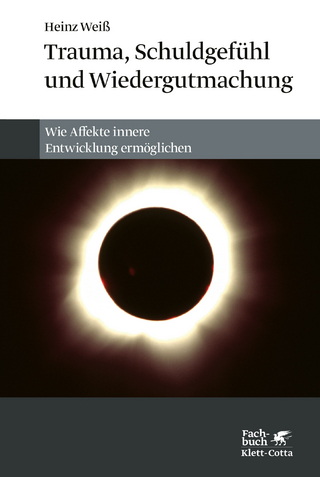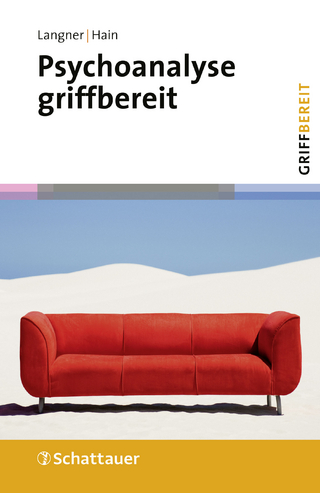
The Oxford Handbook of Transcranial Stimulation
Oxford University Press (Verlag)
978-0-19-883225-6 (ISBN)
- Noch nicht erschienen (ca. August 2024)
- Versandkostenfrei innerhalb Deutschlands
- Auch auf Rechnung
- Verfügbarkeit in der Filiale vor Ort prüfen
- Artikel merken
Transcranial stimulation encompasses noninvasive methods that transmit physical fields-such as magnetic, electric, ultrasound, and light-to the brain to modulate its function. The most widespread approach, transcranial magnetic stimulation (TMS), has emerged as an important tool in several areas of neuroscience as well as in clinical applications in psychiatry and neurology. Originally envisioned as a way to measure the responsiveness and conduction speed of neurons and synapses in the brain and spinal cord, TMS has also become an important tool for changing the activity of brain neurons and the functions they subserve as well as an causal adjunct to brain imaging and mapping techniques. Along with transcranial electrical stimulation techniques, TMS has diffused far beyond the borders of clinical neurophysiology and into cognitive, perceptual, behavioural, and therapeutic investigation and attracted a highly diverse group of users and would-be users. Another major success of TMS has been as a treatment in psychiatry, where it is now in routine use worldwide. The field of noninvasive neuromodulation has matured and diversified considerably in the past decade, with an expansion in the number of tools available and our understanding of their mechanisms of action.
This second edition of The Oxford Handbook of Transcranial Stimulation brings together the latest developments and important advances in all areas of Transcranial stimulation. The new volume captures the rapid progress made since the first edition, and provides an authoritative and comprehensive review of the state of the art. It also highlights challenges, opportunities, and future directions for this rapidly changing field. The book focuses on the scientific and technical background required to understand transcranial stimulation techniques and a wide-ranging survey of their burgeoning applications in neurophysiology, neuroscience, and therapy. Each of its six sections deals with a major area and is edited by an international authority therein. It will serve researchers, clinicians, students, and others as the definitive text in this area for years to come.
Dr. Eric Wassermann received his B.A. from Swarthmore College, his M.A. from the University of Pennsylvania, and his M.D. from New York Medical College. After a residency in neurology at the Boston City Hospital, he completed a fellowship in the Human Motor Control Section at the National Institute of Neurological Disorders and Stroke, where he stayed on as a Staff Clinician and independent investigator. His research focuses on revealing the mechanisms of behavioral adaptation and learning in humans, and using noninvasive brain stimulation and other methods to enhance those processes. Dr. Angel V. Peterchev received his A.B. degree in Physics & Engineering Sciences from Harvard University and his M.S. and Ph.D. degrees in Electrical Engineering & Computer Science from the University of California, Berkeley. He completed post-doctoral training in Brain Stimulation at Columbia University. Dr. Peterchev is presently Associate Professor at Duke University in the Department of Psychiatry & Behavioral Sciences, with secondary appointments in Electrical & Computer Engineering, Biomedical Engineering, and Neurosurgery. He directs the Brain Stimulation Engineering Lab which aims to improve noninvasive brain stimulation through the development of devices, computational models, and application paradigms. Dr. Sarah Hollingsworth Lisanby completed her BS, MD, and psychiatry residency at Duke University, and a geriatric psychiatry fellowship at Columbia University. She went on to become JP Gibbons Endowed Professor and Chair of the Duke Psychiatry Department. Her research focuses on innovations in brain stimulation in psychiatry. She conducted the first-in-animal, first-in-human, and first randomized controlled trials with Magnetic Seizure Therapy (MST) to treat severe depression. She leads large scale funding initiatives in 'The Brain Research Through Advancing Innovative Neurotechnologies' (BRAIN) initiative, and directs the Division of Translational Research and the Noninvasive Neuromodulation Unit at the National Institute of Mental Health. Prof. Ulf Ziemann received his MD from the University of Göttingen, Germany. He is currently the Director of the Department Neurology & Stroke, and Co-Director of Hertie-Institute for Clinical Brain Research, University of Tübingen, Germany. He has been Editor-in-Chief of Clinical Neurophysiology since 2016 and Deputy Editor of Brain Stimulation since 2007. His research focuses on motor cortex physiology, plasticity, brain-state-dependent stimulation, transcranial magnetic stimulation, TMS-EEG, and neuropharmacology. His clinical expertise is on stroke, neuroimmunology, and clinical neurophysiology. Prof. Vincent Walsh received his B.A. from the University of Sheffield and his PhD from the University of Manchester (UMIST). Following 10 years of post-doctoral research with Alan Cowey at the Dept of Experimental Psychology, Oxford, he moved to the Institute of Cognitive Neuroscience in 2002. His research now focuses on sleep, learning, and social group dynamics. Prof. Hartwig Roman Siebner is a board-certified neurologist who started his academic career at the Department of Neurology, Munich University of Technology. In 2000, he moved to the Institute of Neurology in London, where he had the privilege to work as research fellow with Prof. John Rothwell. In 2022, he was appointed by the Christian-Albrecht-University Kiel as principal investigator in the collaborative brain imaging initiative 'Neuroimage-Nord'. In 2008, he joined the Danish Research Centre for Magnetic Resonance (DRCMR) at Copenhagen University Hospital Hvidovre and has been leading the research centre as scientific director since 2010.
Section I: Physics, Biophysics, and TechnologyAngel V. Peterchev:
1: Boshuo Wang, Aman S. Aberra, Warren M. Grill, and Angel V. Peterchev: Physics and biophysics fundamentals of transcranial stimulation
2: Dennis Q. Truong, Niranjan Khadka, Angel V. Peterchev, and Marom Bikson: Transcranial electrical stimulation devices
3: Angel V. Peterchev and Mark E. Riehl: Transcranial magnetic stimulators
4: Risto J. Ilmoniemi, Zhi-De Deng, Luis Gomez, Lari M. Koponen, Jaakko O. Nieminen, Angel V. Peterchev, and Charles M. Epstein: Transcranial magnetic stimulation coils
5: Martin Sommer, Ricci Hannah, Angel V. Peterchev, and Walter Paulus: TMS pulse waveform and direction
6: Axel Thielscher, Kristoffer H. Madsen, Gary E. Strangman, and Bradley E. Treeby: Computational methods for dosimetry
7: Stefan M. Goetz and Thomas Kammer: Neuronavigation
8: Guglielmo Foffani and Antonio Oliviero: Transcranial static magnetic field stimulation
9: Kim Butts Pauly, Zhihai Qiu, and Wynn Legon: Transcranial ultrasound modulation
10: Xinlong Wang, Francisco Gonzalez-Lima, and Hanli Liu: Transcranial infrared laser stimulation
Section II: TMS measures of motor cortical and corticospinal excitability: Physiology, function and plasticityUlf Ziemann:
11: Sein H. Schmidt and Stephan A. Brandt: Motor threshold, motor evoked potential, central motor conduction time
12: Markus Kofler and Vasilios Kimiskidis: Cortical silent period
13: Robin Cash and Ulf Ziemann: Paired-pulse measures [SICI, SICF, ICF, LICI, LCD]
14: Ritsuko Hanajima, Vincenzo di Lazzaro, Yoshikazu Ugawa: Paired-coil measures
15: Ulf Ziemann: Pharmacology of TMS measures
16: Robert Chen and Kai-Hsiang Stanley Chen: Clinical Utility of TMS-EMG measures
17: Risto Ilmoniemi, Nigel Rogasch, and Silvia Casarotto: TMS measures explored by EEG recordings
18: John Rothwell and Ricci Hannah: TMS measures and voluntary motor function
19: Joseph Cla?en, Christoph Zrenner, and Ying-Zu Huang: Changes in TMS measures induced by repetitive TMS
20: Michael Nitsche, Walter Paulus, and Gregor Thut: Changes in TMS measures induced by transcranial direct and alternating current stimulation
Section III: Combining transcranial brain stimulation with brain mappingHartwig R. Siebner:
21: Anke N. Karabanov and Hartwig R. Siebner: Brain mapping and brain stimulation - a framework
22: Raffaele Dubbioso and Axel Thielscher: Transcranial brain stimulation and structural MRI
23: Christian Windischberger, Martin Tik, Axel Thielscher, and Hartwig R. Siebner: Transcranial brain stimulation and functional MRI
24: Charlotte J. Stagg: Transcranial brain stimulation and magnetic resonance spectroscopy
25: Sang Soo Cho and Antonio Strafella: Transcranial brain stimulation and PET
26: Til Ole Bergmann, Leo Tomasevic, and Hartwig R. Siebner: Transcranial brain stimulation and EEG/MEG
Section IV: Transcranial Magnetic Stimulation in Perception and CognitionVincent Walsh:
27: David Pitcher: Higher level vision
28: Amanda Ellison: Attention and spatial cognition
29: Gábor Csifcsák, Matthias Mittner, and Birte U. Forstmann: Decision Making
30: Marinella Cappelletti and Maria Silvia Saccani: Numerical Cognition
31: Juha Silvanto: State-dependent studies on perception and cognition
Section V: Noninvasive brain stimulation in learning and memoryEric Wasserman:
32: Michael V. Freedberg and Eric Wassermann: rTMS and implicit learning
33: Anke Ninija Karabanov, Elinor Tzvi-Minker: Effects of electrical brain stimulation on motor learning
34: Melissa Habscher and Joel L. Voss: Transcranial stimulation of episodic memory networks
35: Bradley R. Postle, Eva Feredoes, and Jeffrey S. Johnson: Working memory
36: Ainslie Johnstone, James J. Bonaiuto, and Sven Bestmann: Computational Neurostimulation
37: Anita S. Jwa: Ethical Issues in Transcranial Stimulation for Enhancement
Section VI: Therapeutic Applications of Transcranial StimulationSarah Lisanby:
38: Colleen Loo, Donel Martin, and Adriano Moffa: New developments in the treatment of depression with tDCS
39: Leanne Williams: Stratified precision medicine for transcranial magnetic stimulation treatment of Major Depressive Disorder
40: Noah S. Philip, Nick Petrosino, McKenna Brennan: TMS in the treatment of posttraumatic stress disorder
41: Bruce Luber and Lysianne Beynel: Cognitive enhancement using Noninvasive Brain Stimulation (NIBS), with application to normal and pathological cognitive decline in aging
42: Bernadette Fitzgibbon and Siobhan Schabrun: Transcranial Stimulation and the Pain Experience
43: Flavio Frohlich and Fred Jarskog: Non-Invasive Brain Stimulation in Schizophrenia
44: Lindsay Oberman, Peter Enticott, and Melissa Kirkovski: Experimental and Therapeutic use of Transcranial Stimulation techniques in Autism Spectrum Disorder
45: Zhi-De Deng and Sarah H. Lisanby: Next Generation Seizure Therapy
| Erscheint lt. Verlag | 14.8.2024 |
|---|---|
| Reihe/Serie | Oxford Handbooks |
| Verlagsort | Oxford |
| Sprache | englisch |
| Maße | 171 x 246 mm |
| Themenwelt | Geisteswissenschaften ► Psychologie ► Allgemeine Psychologie |
| Geisteswissenschaften ► Psychologie ► Biopsychologie / Neurowissenschaften | |
| Geisteswissenschaften ► Psychologie ► Verhaltenstherapie | |
| Medizin / Pharmazie ► Medizinische Fachgebiete ► Neurologie | |
| Naturwissenschaften ► Biologie ► Humanbiologie | |
| Naturwissenschaften ► Biologie ► Zoologie | |
| ISBN-10 | 0-19-883225-7 / 0198832257 |
| ISBN-13 | 978-0-19-883225-6 / 9780198832256 |
| Zustand | Neuware |
| Haben Sie eine Frage zum Produkt? |
aus dem Bereich


